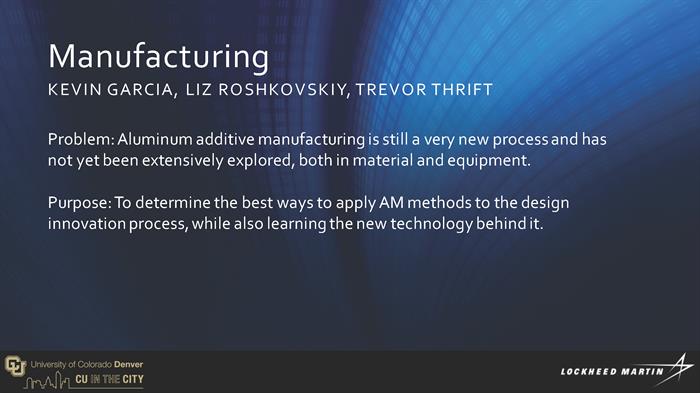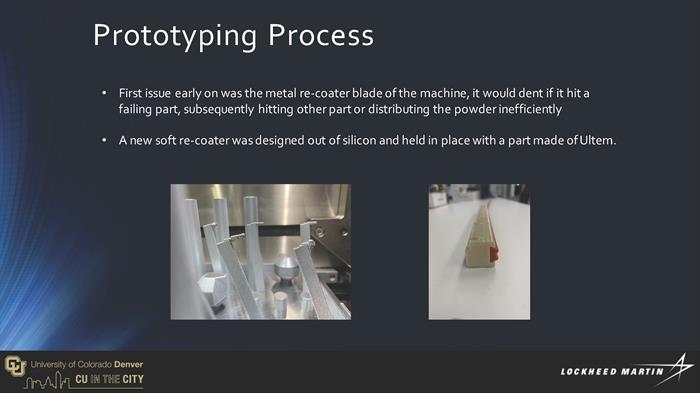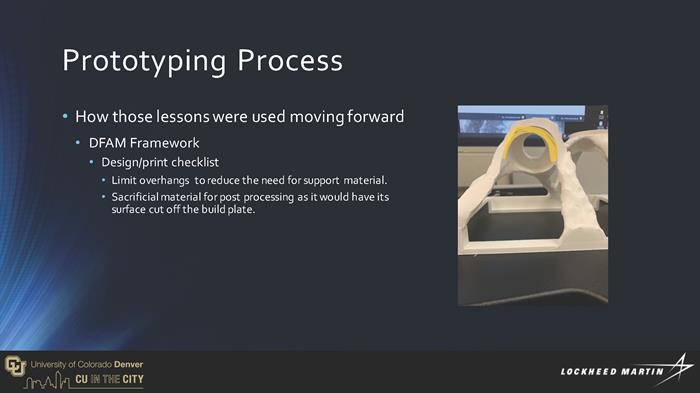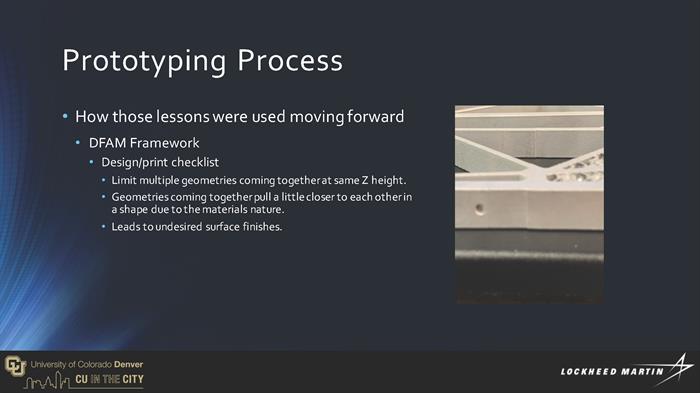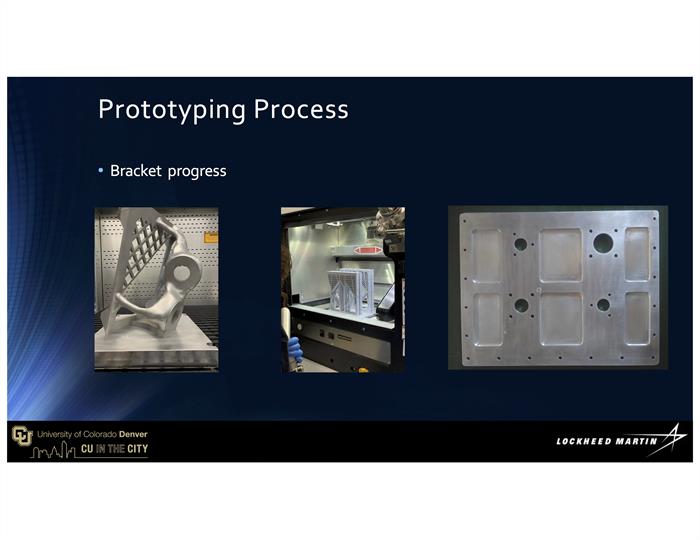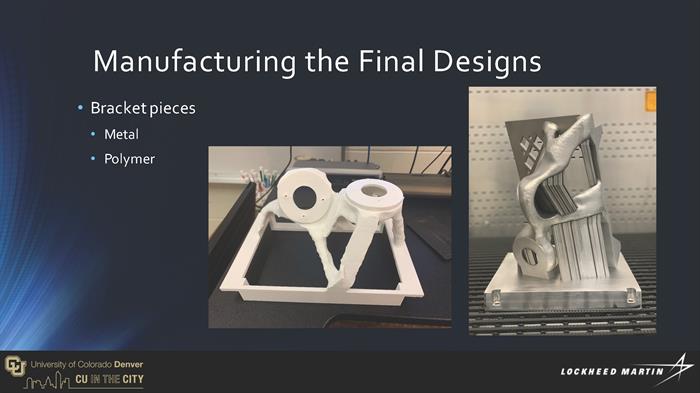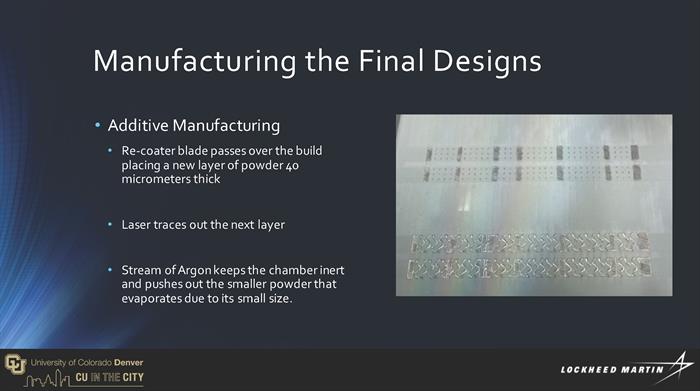Lockheed Martin GPS Satellite Bracket – Manufacturing Team
Department of Mechanical Engineering
Project Abstract
The CU Denver and Lockheed Martin partnership resulted in the addition of an EOS M290 Direct Metal Laser Sintering (DMLS) machine to the downtown campus in the fall of 2019. DMLS is the process of which a thin layer of metal powder is deposited across a platform. Next, a laser is scanned across the powder to sinter and fuse the powder. This process is repeated layer-by-layer to create a 3D-printed structure. Aluminum 6061 has recently been developed into a powder by Elementum 3D (Erie, CO) and has generated high interest from Lockheed Martin for use in 3D-printed spaceflight hardware. Overall, this printing and material technology is extremely novel, and its capabilities have not yet been thoroughly explored and established. Therefore, in order to produce a successful bracket, the manufacturing team first needed to determine the abilities and restrictions of the machine with Elementum 3D’s Aluminum 6061 powder.
This project posed a unique set of challenges, as the powder itself is also so new that a material property set for it does not exist within the 3D-printer’s software. A variety of test pieces were printed in order to dial in the print parameters of the machine. In order to judge the quality of the prints, they were inspected for surface finish quality, shift lines, short fed areas, or excess sintered powder.
Once a material profile was developed for the machine, two bracket designs created by the software team were to be printed. However, each design had to be pre-processed in order to prepare the design to be printed. This included checking for mesh errors, checking for overhangs, and looking for holes, overlaps, or any other problematic geometries, all of which could result in a failed print. A checklist was created to help guide the process from final design to 3D printing in an effort to optimize the process.
Ultimately, we successfully printed five aluminum bracket parts including side pieces for the conservative design and a bracket thruster mount for the generative design. Some parts were determined to be best suited for subtractive rather than additive manufacturing, which resulted in a combination of manufacturing methods for the final bracket assemblies. Due to the state of world events that limited access to the facilities, several components of the final bracket assemblies were not able to be printed using aluminum as planned, and instead were additively manufactured using polymers in order to provide a sufficient model for presentation.
